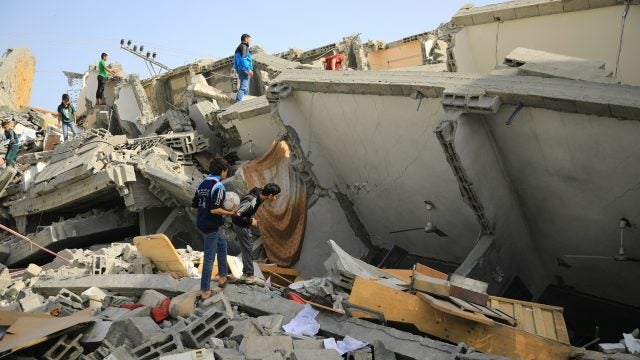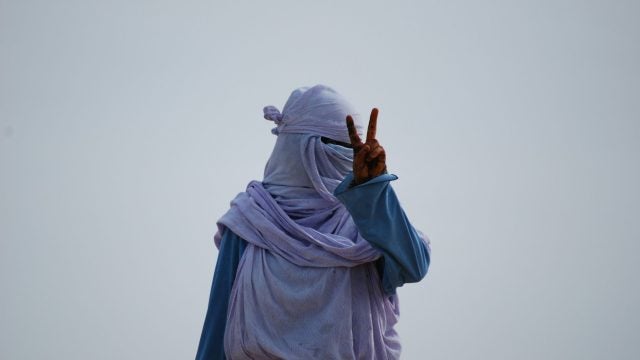
Title: After a Decade of Achievement, It Is Time to Move Beyond Fistula
Last Thursday, May 23, the world celebrated ten years of fighting fistula, a horrible condition that affects up to 3 million women and girls in the Global South. Fistula is caused by obstructed childbirth and occurs when the fetus becomes wedged in the mother’s pelvis, creating a hole in her birth canal. If untreated, the mother either dies or survives to leak feces and urine, in which case she is likely to become a social outcast.
Fistula is an assault on human dignity. It is difficult to write about, let alone treat. Let us therefore hail The Campaign to End Fistula, which was launched by the UN Population Fund (UNFPA) in 2003. Over the past ten years, the UNFPA alone has supported over 34,000 fistula surgeries. USAID has set up a series of fistula country programs. At last count, 238 facilities around the world were treating the condition.
The fistula campaign deserves special credit for venturing beyond maternal mortality. Over 800 women die every day in childbirth in the Global South, and it is hardly surprising that maternal mortality is one of the leading Millennium Development Goals. Fistula, however, is a morbidity and does not pose an immediate threat of death. The fact that agencies are ready to move against morbidities as well as mortality represents a bold shift. As UNFPA points out, for every woman who dies in childbirth, twenty more are disabled.
But with success have come questions. First, what is the long-term vision for the campaign? Last year, political infighting in Washington produced two bills before the U.S. Congress with two very different perspectives. One bill, from Representative Carolyn Maloney (New York), focused on preventing fistula and included a call for family planning. The rival bill, from Representative Rosa DeLauro (Connecticut), proposed treating fistula at special centers of excellence that would be staffed by visiting American surgeons. The DeLauro bill made no mention of family planning.
In the event, neither bill was put to a vote, but Representative DeLauro is reportedly preparing to try again. Many reproductive health experts feel this would be a big mistake. For one thing, there are very few American fistula specialists because fistula is so uncommon in the United States. On the other hand, ten years of work on fistula has produced a network of skilled surgeons in the Global South, and many feel that U.S. money should go to building up their local health support systems. Contacted in the Congo, where she is working at the famed Panzi hospital, Lauri Romanzi, a prominent American urogynecologist, called the DeLauro proposal “daft.”
The second major question about the fistula campaign is whether the single-minded focus on fistula has produced a privileged aid “silo” that excludes other damaging conditions caused by childbirth. The biggest concern is with uterine prolapse, or fallen womb. According to the UNFPA, over 600,000 women in Nepal suffer from the condition, which—like fistula—robs women of their dignity as well as their health. One doctor told me: “It’s very difficult to convey the sheer misery of living for years with one’s private parts hanging between your legs.”
The causes of prolapse are also similar to fistula and include poor nutrition, untrained midwives, and inadequate maternal health care. As with fistula, women with severe prolapse are also likely to be ostracized. Younger victims have difficulty finding a husband. Older sufferers may be divorced, rejected by their families, and end up working as servants for their former husbands. It is perhaps no coincidence that a 2010 UNFPA study of eight districts in Nepal found suicide to be the leading killer of women of reproductive age.
So why not expand the fistula campaign to prolapse? Because, say the agencies, that would detract from fistula. During a meeting in Washington last September, Gillian Slinger, head of the fistula program at UNFPA, said that fistula poses a greater threat than prolapse. Furthermore, the battle against fistula is far from won – and fistula should have first call on limited health budgets. One hears the same from USAID.
Donors are so opposed to taking on prolapse that women with prolapse are reportedly seeking treatment at fistula camps in Africa and being turned away. This raises troubling ethical questions for Sinan Khaddaj, an experienced surgeon who runs the Women and Health Alliance (WAHA) in Paris. Dr. Khaddaj says that many of the women arriving at WAHA hospitals are suffering from chronic incontinence caused by years of childbearing but not necessarily fistula. He said it was “inhuman” to turn such women away.
So what is the solution? A growing number of experts, like Lauri Romanzi and Sinan Khaddaj, argue for an integrated approach to all pelvic floor disorders—fistula, prolapse, and incontinence—under the broad rubric of maternal health. This could start in villages, where health workers and midwives would be trained to diagnose all of the conditions and provide basic treatment. Women needing surgery would be referred to hospitals, where doctors would be trained and helped by international specialists as appropriate. Some hospitals in Africa are already experimenting with integrated training.
A new approach like this, which builds on the success of the fistula campaign to provide comprehensive reproductive health care, would be the best possible outcome. Of course, it might alarm some die-hard fistula fans, but can they really deny any woman the chance of a healthy life? Let’s get ready for another, longer, walk to beautiful.
Image Credit: Department of Foreign Affairs and Trade website – www.dfat.gov.au, CC BY 4.0 <https://creativecommons.org/licenses/by/4.0>, via Wikimedia Commons
This is an archived article. While every effort is made to conserve hyperlinks and information, GJIA’s archived content sources online content between 2011 – 2019 which may no longer be accessible or correct.
More News

This piece examines the UK government’s proscription of Palestine Action under the Terrorism Act, situating it within a broader trend of shrinking space for public dissent. It argues that the…

This article analyses the distortions of the International Humanitarian Law (IHL) notion of proportionality in the context of the Israel-Gaza war. It discusses Israel’s attempts to reinterpret proportionality to justify…

The escalating women’s rights crisis in Afghanistan demonstrates a gap in international legal protections of the rights of women and girls. The international community should fill this gap by making…